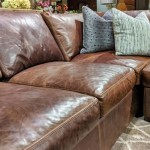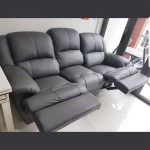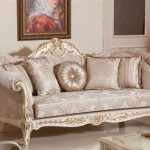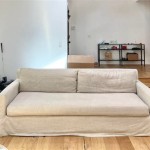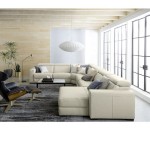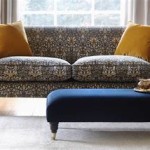Best Non-Toxic Sofas: A Guide to Safe and Healthy Seating
The modern sofa is frequently a centerpiece of the living room, providing comfort and a gathering space for families and friends. However, conventional sofas can be constructed using materials that release volatile organic compounds (VOCs) and other potentially harmful chemicals into the home environment. These substances can contribute to indoor air pollution and negatively impact the health of sensitive individuals, particularly those with allergies, asthma, or chemical sensitivities. As a result, there is increasing demand for non-toxic sofas made from safer and more sustainable materials. This article provides an overview of the essential considerations when selecting a non-toxic sofa, helping consumers make informed decisions to create a healthier living space.
Many conventional sofas contain a range of chemicals that are potentially harmful. These include flame retardants, which are added to meet flammability standards but can leach out of the furniture over time; formaldehyde, a known carcinogen found in adhesives and pressed wood products; and VOCs, emitted from synthetic fabrics, foams, and finishes. Exposure to these chemicals can cause a variety of health problems, ranging from mild irritation to more serious conditions. Non-toxic sofas, on the other hand, are designed to minimize or eliminate these harmful substances, offering a safer and healthier alternative.
Understanding Toxic Chemicals in Conventional Sofas
Identifying the specific chemicals of concern in conventional sofas helps consumers understand the importance of choosing non-toxic alternatives. Common culprits include:
Flame Retardants: These chemicals are often added to furniture foam and fabrics to slow down the spread of fire. However, many flame retardants have been linked to hormone disruption, neurological problems, and cancer. Older sofas may contain polybrominated diphenyl ethers (PBDEs), which have been phased out in many regions due to their toxicity. Newer flame retardants, while intended to be safer, may still pose health risks. Non-toxic sofas typically avoid these chemicals altogether, relying on natural fire-resistant materials like wool.
Formaldehyde: This volatile organic compound is commonly found in adhesives used to bond wood components and in some fabrics. Formaldehyde is a known carcinogen and can cause respiratory irritation, skin allergies, and other health problems. It's important to look for sofas made with formaldehyde-free adhesives and solid wood frames or those that use certified low-emitting composite wood products.
Volatile Organic Compounds (VOCs): VOCs are emitted from a range of materials, including synthetic fabrics, foams, and finishes. These chemicals can contribute to indoor air pollution and cause a variety of health symptoms, such as headaches, dizziness, and nausea. Some VOCs are also known carcinogens. Opting for sofas made with natural fabrics, such as organic cotton, linen, or wool, and low-VOC or zero-VOC finishes can significantly reduce VOC emissions.
Perfluorinated Chemicals (PFCs): PFCs, also known as PFAS, are used in some fabrics to provide stain resistance. However, these chemicals are persistent in the environment and have been linked to a range of health problems, including immune system disruption, thyroid issues, and cancer. Look for sofas that are explicitly labeled as PFC-free or stain-resistant without the use of perfluorinated chemicals.
Synthetic Dyes and Finishes: Conventional dyes and finishes can contain heavy metals and other harmful chemicals that can leach out of the sofa over time. Choosing sofas made with natural dyes or low-VOC finishes can minimize exposure to these substances.
Key Features of Non-Toxic Sofas
Non-toxic sofas prioritize the use of safe and sustainable materials and construction methods to minimize exposure to harmful chemicals. Key features include:
Natural and Organic Materials: The use of natural and organic materials is a hallmark of non-toxic sofas. Organic cotton, linen, and wool are popular choices for upholstery fabrics, as they are grown without the use of synthetic pesticides and fertilizers. Natural latex foam, derived from the sap of rubber trees, is a common alternative to polyurethane foam, which can emit VOCs. Solid wood frames, particularly those made from sustainably harvested wood, are preferred over composite wood products that may contain formaldehyde.
Flame Retardant-Free Construction: Non-toxic sofas typically avoid the use of chemical flame retardants altogether. Instead, they rely on naturally fire-resistant materials, such as wool, or employ design strategies to meet flammability standards without the need for added chemicals. The use of tightly woven fabrics and specific construction techniques can help to slow down the spread of fire without compromising safety.
Low-VOC or Zero-VOC Adhesives and Finishes: Adhesives and finishes used in non-toxic sofas are carefully selected to minimize VOC emissions. Look for products that are certified as low-VOC or zero-VOC by independent organizations such as GreenGuard or SCS Global Services. These certifications ensure that the products meet stringent standards for chemical emissions and contribute to better indoor air quality.
Certifications and Labels: Certifications and labels provide assurance that a sofa meets specific standards for safety and sustainability. Some of the most relevant certifications for non-toxic sofas include:
* GOTS (Global Organic Textile Standard): This certification ensures that textiles are made from organically grown fibers and processed according to strict environmental and social criteria. * Oeko-Tex Standard 100: This certification tests textiles for harmful substances and ensures that they are safe for human health. * CertiPUR-US: This certification ensures that foam products are made without certain harmful chemicals, such as flame retardants and heavy metals, and have low VOC emissions. * GreenGuard: This certification tests products for chemical emissions and ensures that they meet strict standards for indoor air quality. * Forest Stewardship Council (FSC): This certification ensures that wood products are sourced from responsibly managed forests.Choosing the Right Non-Toxic Sofa
Selecting the right non-toxic sofa involves careful consideration of materials, construction, and certifications. Here's a step-by-step guide to help consumers make an informed decision:
Research Materials: Start by researching the materials used in the sofa's construction. Look for sofas made with natural and organic fabrics, solid wood frames, and natural latex or other non-toxic foam alternatives. Avoid sofas made with synthetic fabrics, composite wood products, and polyurethane foam, unless they are certified as low-VOC or zero-VOC.
Check for Certifications: Look for certifications and labels that indicate the sofa meets specific standards for safety and sustainability. GOTS, Oeko-Tex Standard 100, CertiPUR-US, GreenGuard, and FSC certifications are all valuable indicators of a non-toxic product.
Inquire About Flame Retardants: Ask the manufacturer or retailer about the use of flame retardants in the sofa. Opt for sofas that are explicitly labeled as flame retardant-free or that rely on natural fire-resistant materials like wool.
Consider Construction Methods: Investigate the construction methods used in the sofa's fabrication. Look for sofas with sturdy frames, durable stitching, and well-crafted details. Avoid sofas that appear poorly made or that have a strong chemical odor.
Read Reviews: Read online reviews from other consumers to get insights into the sofa's quality, comfort, and durability. Pay attention to reviews that mention chemical sensitivities or concerns about off-gassing.
Visit Showrooms: If possible, visit showrooms to inspect sofas in person. This allows you to assess the comfort, quality, and overall feel of the sofa. It also provides an opportunity to speak with sales representatives and ask specific questions about the materials and construction processes.
Consider Your Budget: Non-toxic sofas can be more expensive than conventional sofas due to the higher cost of natural and organic materials. However, the investment in a healthier and more sustainable product is often worth it in the long run. Set a budget and prioritize the features that are most important to you.
Think About Style and Design: While safety and sustainability are paramount, it's also important to choose a sofa that complements your personal style and fits well within your living space. Consider the size, shape, and design of the sofa to ensure that it meets your aesthetic preferences.
By carefully considering materials, certifications, construction methods, and other factors, consumers can confidently choose non-toxic sofas that provide a safe, comfortable, and stylish seating option for their homes. This contributes to a healthier indoor environment and supports a more sustainable approach to furniture consumption.

Affordable Non Toxic Couch Picks The Hunt For Furniture Healthy House On Block

10 Eco Friendly Non Toxic Sofa S Holistic Home Designer
The Best Eco Friendly Non Toxic Sofas Honest Consumer

10 Eco Friendly Non Toxic Sofa S Holistic Home Designer

The Best Safe Sofa Non Toxic Couch Brands For 2024 Filtery

11 Best Non Toxic Couches And Sofas For Eco Friendly Home

The Best Non Toxic Couch For 2024 Natural Baby Mama

Organic Sofas Eco Friendly Non Toxic Sofa For The Futon

9 Eco Friendly Sofas Sustainable Couches For Conscious Chill

The Best Safe Sofa Non Toxic Couch Brands For 2024 Filtery

